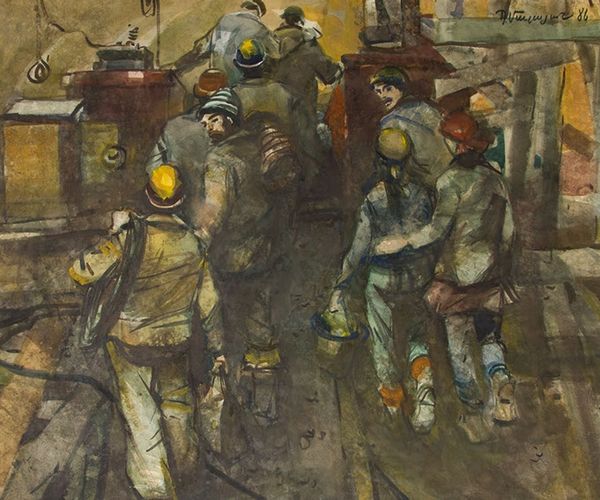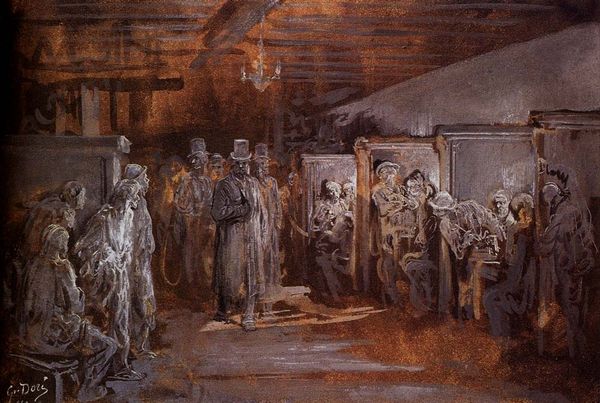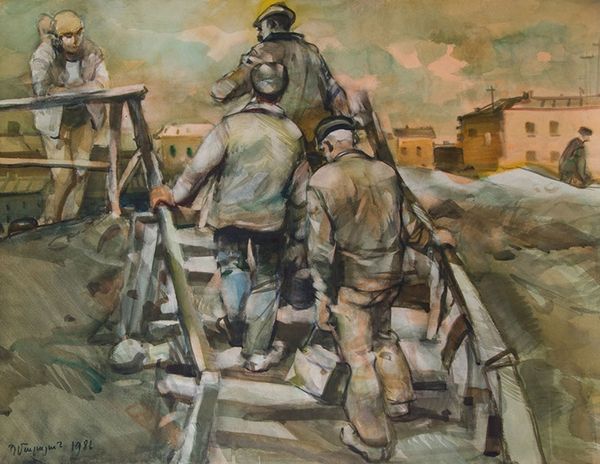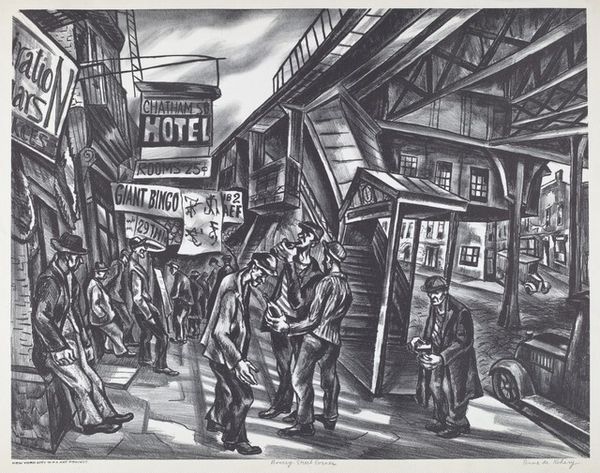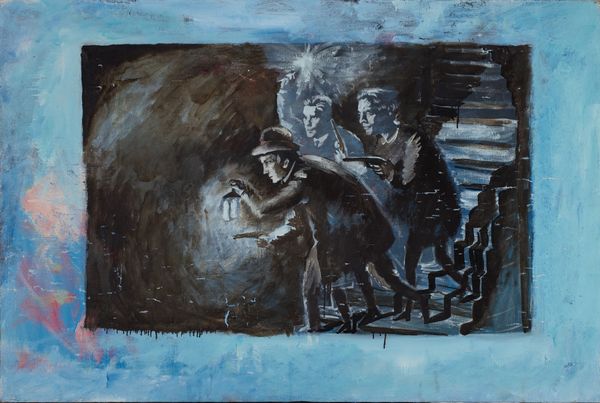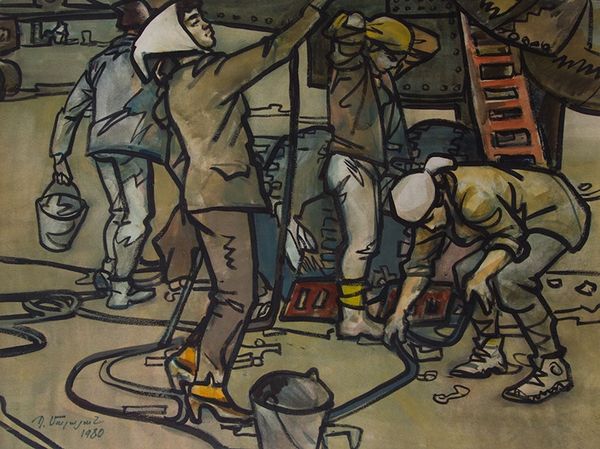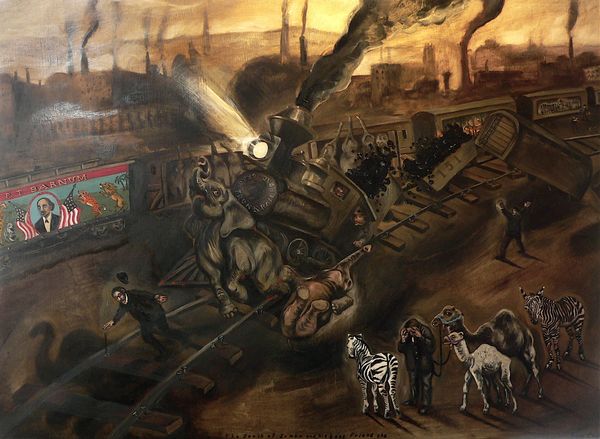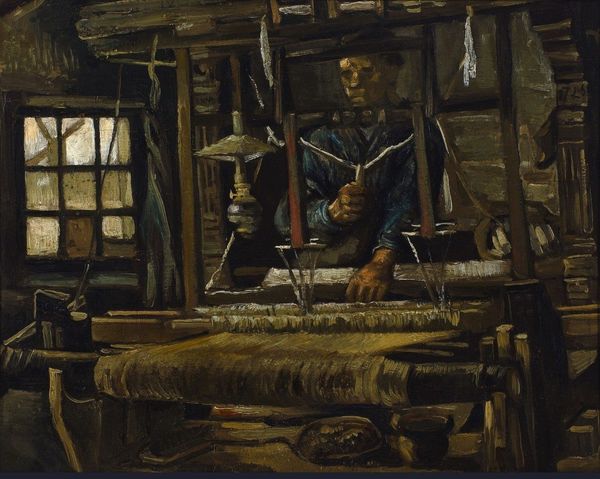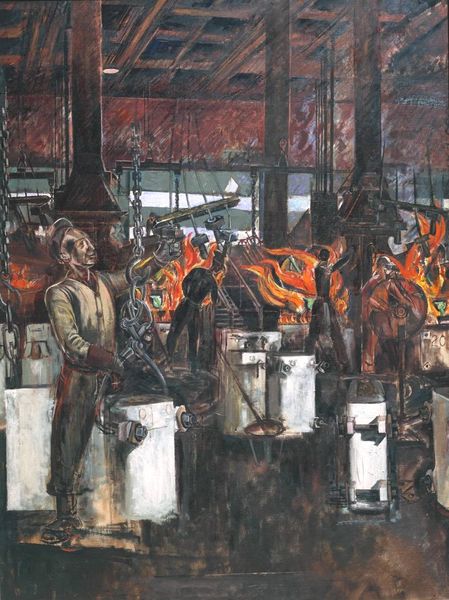
Dimensions: 35 5/8 × 29 9/16 in. (90.49 × 75.09 cm) (sight)41 11/16 × 35 1/2 × 2 1/2 in. (105.89 × 90.17 × 6.35 cm) (outer frame)
Copyright: No Copyright - United States
Curator: Morris Topchevsky’s “Strike Breakers (Company Violence),” painted in 1937 and housed here at the Minneapolis Institute of Art, plunges us into a fraught moment in labor history. Editor: Whew, right away, I feel like I’ve walked into a pressure cooker. The muted colors, the compressed space, those figures in gas masks—it all screams tension and suppressed fury. It’s not just an image; it's a visceral experience. Curator: Indeed. Topchevsky situates this scene squarely within the social realism movement, an artistic response to the economic hardships and social injustices prevalent in the United States during the Great Depression. His work confronts issues like labor disputes head-on, serving as a mirror reflecting a particularly turbulent moment. Editor: Absolutely, it hits you right in the gut. Those masked figures pointing their guns upwards. I see the artist implicating systems, the figures above them, perhaps those who hide away, calling the shots from their highrise. It speaks of how power shields itself from accountability. Makes you want to get closer to inspect those frozen faces in the windows behind! Curator: It’s fascinating how Topchevsky employs specific details to comment on labor relations during this era. Look at the contrast between the figures in gas masks—clearly representing strikebreakers—and the glimpse of what appears to be workers inside, a sign saying "don’t scab”. This depiction not only reflects the intense conflicts of the period, but also touches on deeper issues like class division, worker exploitation and public sentiment during strikes. Editor: The composition also cranks up the volume. The perspective almost feels tilted, which disorients the viewer, a clever move I think because, I can imagine feeling like I'm thrown off balance, forced to question everything, which really adds another layer. How deliberate of the artist! I like the visual metaphors within metaphors, that the composition isn't so much "telling" me things, but more suggesting feelings in an almost intuitive way. Curator: Well put. Through this artwork, Topchevsky encourages us to question the role of violence and authority during labor disputes and to consider whose stories are often left untold. It’s more than just a depiction; it's a call to critically examine the narratives we construct around power. Editor: Definitely stirs something up, doesn't it? It feels like a timeless echo chamber about social struggle, making us look not just at history, but also question our present moment. Thanks for this viewing, Curator.
Comments
minneapolisinstituteofart almost 2 years ago
⋮
This eerie scene of gas mask wearing troops bearing weapons looks like it could be a scene straight out of World War I. Instead, it was based on a clash between police and workers in Waukegan, Illinois. In February 1937 workers at Fansteel Metallurgical Corporation just outside of Chicago went on strike because of unfair labor practices. They wanted to form a union to establish representation and safeguard fair wages and safety at the plant. The company convinced local law enforcement to break up the strike. The ensuing standoff lasted a week and resulted in workers being gassed out of the plant and arrested. Topchevsky, a lifelong activist for equality, was moved by the efforts of the workers and painted this image in honor of them.
Join the conversation
Join millions of artists and users on Artera today and experience the ultimate creative platform.
